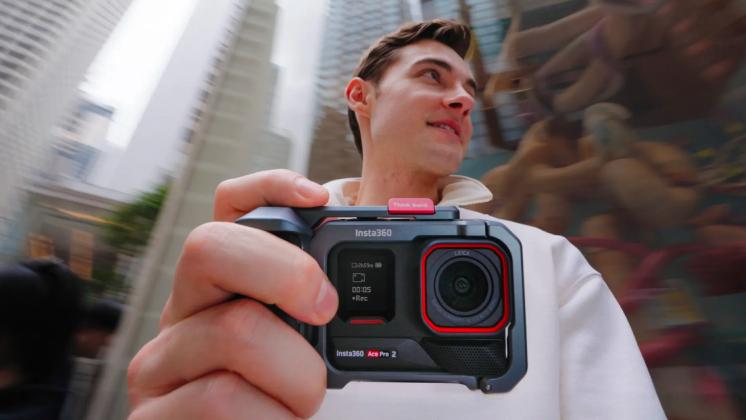Recording yourself in public can feel awkward, especially when you’re trying not to draw attention. Whether you’re creating content, documenting an experience, or practicing a skill, staying discreet is key to feeling comfortable and avoiding unnecessary stares. The good news? It’s entirely possible to record confidently without standing out.
In this article, you’ll discover practical tips and strategies to blend into your surroundings while capturing high-quality footage. From choosing the right equipment—including compact models from leading action camera brands—to mastering subtle techniques, you’ll learn how to make public recording a seamless part of your routine.
Importance Of Recording Discreetly In Public
Discreet recording in public protects your privacy and respects others. Overly visible recording can attract unwanted attention or disrupt your surroundings. By blending into the environment, you maintain focus and reduce the risk of confrontations.
People in public spaces often expect a degree of anonymity. Recording inconspicuously respects this expectation while still allowing you to capture moments. Failing to do so could lead to misunderstandings or objections, especially in shared spaces like parks, cafes, or public transport.
Subtlety also improves content quality. Attention from bystanders may affect your natural behavior or create distractions in footage. Recording discreetly ensures authenticity and helps you appear relaxed, which enhances audience engagement.
Before recording, take note of cultural or local norms to avoid offending those in the vicinity. Some locations may even have legal restrictions on video recording. Adapting your approach to suit these factors ensures smoother interactions and better results.
Choosing The Right Equipment
Selecting appropriate tools ensures effective public recording while avoiding attention. Focus on compact, lightweight, and easily concealed devices for better discretion.
Compact and Lightweight Cameras
Small and portable cameras work well for subtle recording tasks. Their unobtrusive design makes them less noticeable, allowing natural interaction with your surroundings. Devices like the Insta360 are ideal, offering high-quality output in a compact form. Features like silent operation or the absence of bright indicators help maintain discretion in highly populated areas.
Accessories for Stealthy Recording
Accessories enhance your setup without drawing focus. Discreet microphones capture audio without visible bulk, providing clarity in noisy environments. Stabilizing tools designed for mobility prevent shaky footage, serving as practical aids in dynamic locations. Covert holders or carriers blend with personal items, keeping your equipment out of plain sight.
Tips For Blending In While Recording
Blending into your environment ensures smooth recording without unwanted attention. Subtle adjustments in attire and behavior can make a significant difference.
Dressing Appropriately
Choose clothing that aligns with local norms and settings. Neutral colors, simple designs, and outfits typical for the location reduce visibility. Avoid flashy patterns or branded logos that may stand out.
In urban areas, everyday casual wear works best, such as jeans and plain shirts. For outdoor or nature settings, practical gear like cargo pants and muted colors helps maintain a low profile. Matching your look to the context minimizes unnecessary scrutiny.
Maintaining Natural Body Language
Keep your gestures relaxed to avoid appearing self-conscious. Sudden movements or excessive camera-focused actions often attract curiosity.
Engage naturally with your surroundings instead of fixating on your recording device. Practice simple actions like placing your phone naturally or blending it seamlessly into other activities. This approach ensures others see routine behavior rather than an obvious effort to capture content.
Legal And Ethical Considerations
Recording yourself in public without being conspicuous requires knowledge of legal requirements and consideration of others’ privacy. Understanding the distinction between legality and ethics is essential.
Understanding Local Laws
Recording laws differ widely depending on jurisdiction. In the US, some states follow one-party consent, where only one participant in the conversation must agree to the recording. Others enforce all-party consent, requiring agreement from everyone involved. These rules apply to not just in-person interactions but also calls and electronic communications.
Public areas often allow recording, as privacy expectations are minimal. However, specific public spaces like museums or government buildings might restrict it. In private areas, laws frequently favor the rights of property owners over the individual recording.
Respecting Privacy of Others
Even if recording complies with laws, ethical concerns arise when violating someone’s privacy. People have an expectation of privacy in certain contexts, such as private gatherings or inside their homes.
Avoid filming sensitive activities or capturing personal data unrelated to your recording’s intent. If possible, inform individuals nearby that you’re recording to maintain transparency. Balancing unobtrusiveness with ethical responsibility ensures respect for the dignity of others and avoids potential conflicts.
Creative Techniques For Discreet Recording
Discreetly recording in public requires simple strategies to maintain subtlety. Use practical methods and thoughtful placement for less visibility.
Using Everyday Objects
Incorporate common items to keep recording unnoticed. Pen-shaped recorders can capture audio while resembling ordinary office supplies. Small, portable devices styled like USB drives are another option for covert audio collection. Both can be carried easily and blend seamlessly into casual settings. Use such tools to record naturally without drawing attention.
Strategic Placement of Cameras
Position your camera thoughtfully to avoid standing out. Place devices in concealed areas like corners, on shelves, or within bags while allowing a clear view of the subject. Small, lightweight cameras are better for discreet filming, as they’re easier to obscure. Leveraging placement can help you blend into public spaces while maintaining a clear line-of-sight for your recording.
Conclusion
Mastering the art of recording yourself in public without drawing attention requires a balance of preparation, mindfulness, and creativity. By staying discreet and respecting the environment around you, you can capture high-quality content while maintaining a natural presence.
With the right tools, thoughtful techniques, and an awareness of legal and ethical boundaries, you’ll be able to document your experiences seamlessly. Prioritize subtlety and respect, and your public recording efforts will feel effortless and rewarding.








